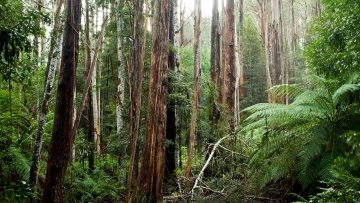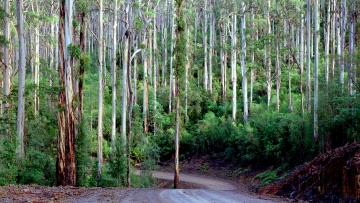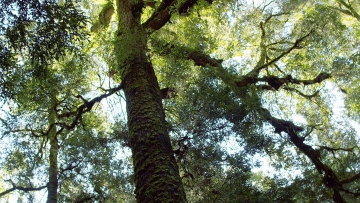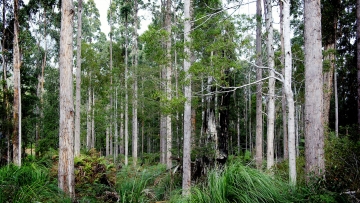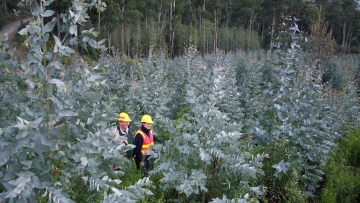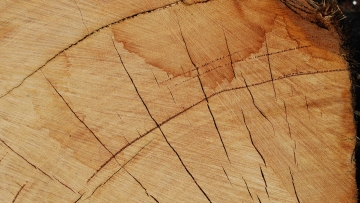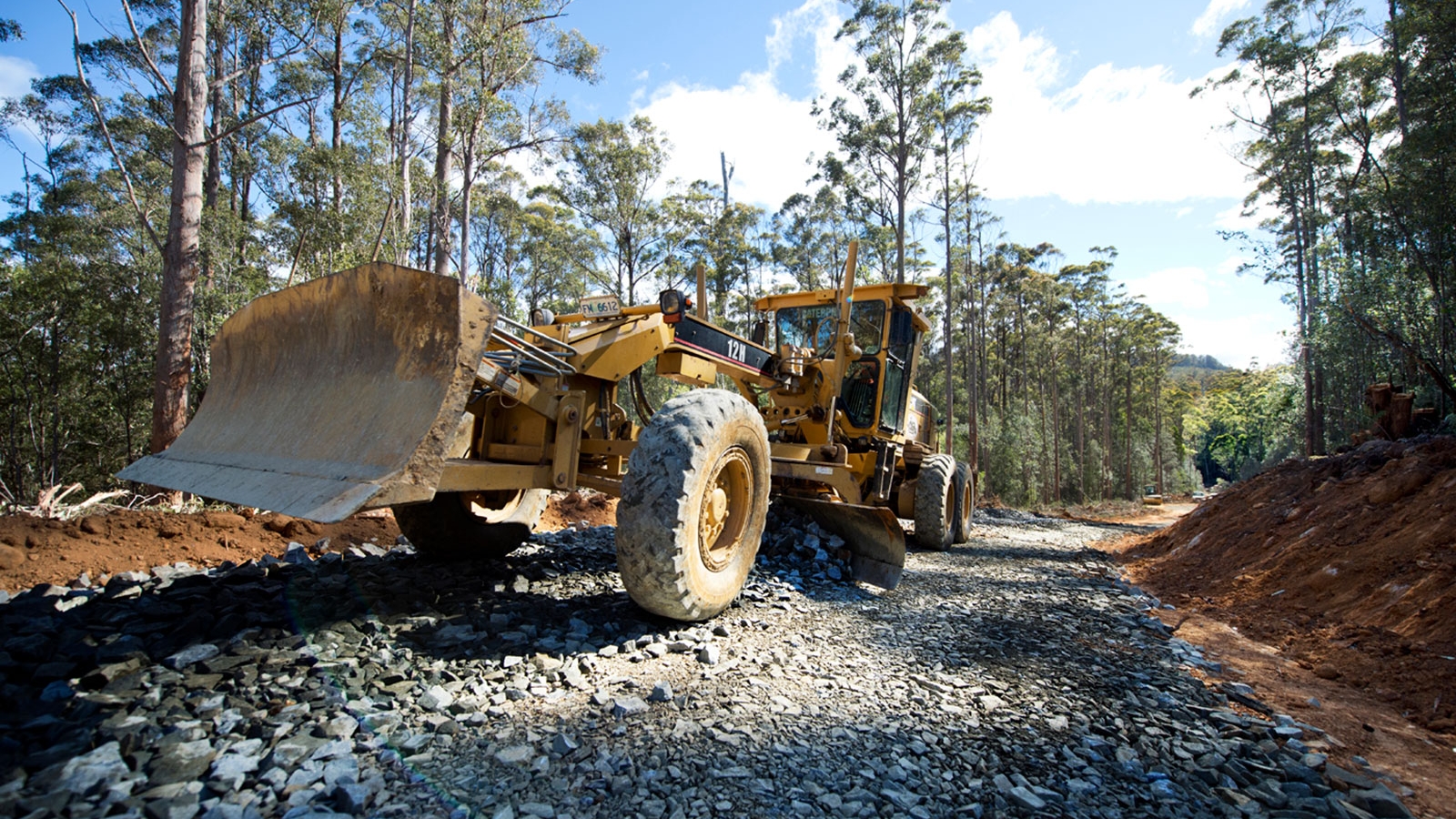
Harvesting and roading
Sustainable Timber Tasmania is required by legislation to make available a minimum of 137,000 cubic metres of high quality sawlog per year. Among other things, this requires building and maintaining an extensive road network to give access to operational areas.
Harvesting methods
A range of harvesting methods are used in Tasmanian production forests. Broadly, they include clearfelling, partial harvesting and selective harvesting.
There are four main types of forests that have been designated for timber production in Tasmania. Broadly, they can be described as:
- Wet eucalypt forests
- Dry eucalypt forests
- Rainforests
- Blackwood forests
Sustainable Timber Tasmania uses different methods to grow, manage, harvest, and regrow each forest type, based on their ecology, scientific research and other important considerations, such as worker safety. For more information, see Fact Sheet No. 5 Harvesting and regrowing and Fact Sheet No. 6 Cable harvesting in the tab below.
Harvesting in wet eucalypt forest
In nature, wet eucalypt forests generally rely on a large bushfire to regenerate. These bushfires remove the canopy, enable sunlight to reach the forest floor, reveal a mineral earth seedbed, start natural seedfall and allow the seedlings to grow with reduced competition and predation from other species.
Sustainable Timber Tasmania uses clearfelling and aggregated retention to harvest timber from these forests to achieve the best regeneration results.
Clearfelling removes most trees and provides the light conditions the eucalypt seedlings require for germination and growth. Sustainable Timber Tasmania then uses a high-intensity burn to create a receptive seedbed, which is broadcast sown with collected seed. A seed management system is used to ensure all harvested areas are re-sown with eucalypt seed that matches the species mix and provenance of the original forest.
Pesticides and fertilisers are generally not used in the regeneration process.
While clearfelling is generally the preferred method of harvesting in wet eucalypt forests, aggregated retention is used in production forests with special significance. This technique is operationally more difficult but is used to provide greater habitat connectivity between forest edges and the regenerating coupe.
Harvesting in dry eucalypt forest
Dry eucalypt forests are generally more open and do not have a dense wet understorey. As a result, sunlight can reach the forest floor enabling seedlings to establish to fill gaps in the canopy. These forests do not need to be clearfelled to produce the right conditions to enable regrowth of harvested trees.
Sustainable Timber Tasmania therefore uses a range of partial harvesting methods in dry eucalypt forests. These methods generally rely on seed falling to the ground from retained trees to regenerate harvested areas.
Harvesting in rainforest
Sustainable Timber Tasmania only undertakes limited harvesting in rainforest areas, for special species timber such as celery top pine, myrtle and sassafras. Selective harvesting techniques are used in these forests. As rainforests regenerate naturally without major disturbance, regeneration burning is not required.
Harvesting in blackwood forest
Blackwoods occur in two forest types:
- Blackwood swamps
- Blackwood-rich wet eucalypt forest.
Clearfelling is used to harvest both types of blackwood forests for the same reason as in wet eucalypt forests. Blackwood seedlings regenerate naturally following major disturbance such as bushfire, floods or windthrow. In blackwood-rich eucalypt forests, a high-intensity regeneration burn follows harvesting to provide the best regeneration conditions.
In blackwood swamps, a low-intensity burn may be used, although the disturbance from harvesting alone can also be sufficient for the seedlings to grow. A temporary fence is also used to protect the seedlings from browsing mammals.
Forestry roads
The main purpose of forestry roads is to provide access to the Permanent Timber Production Zone. Building and maintaining the forest road network is expensive and constitutes a major cost to Sustainable Timber Tasmania.
Where possible, Sustainable Timber Tasmania uses existing roads, as this reduces the financial cost associated with developing new infrastructure.
Any new roads that may be required are identified during our planning processes. Specifications and environmental prescriptions for roads are included in Forest Practices Plans and forest operation plans.
The construction and maintenance of Sustainable Timber Tasmania’s road network requires suitable rock for road bases and repairs. Sustainable Timber Tasmania generally sources this material from its own quarries, as close to where it’s needed as possible.
The Forest Management Act 2013 allows Sustainable Timber Tasmania to charge a fee for the use of a forest road for any purpose. Generally, Sustainable Timber Tasmania charges (tolls) commercial forest road users for access and maintenance fees. In some cases a significant commercial user will, in agreement with Sustainable Timber Tasmania, undertake maintenance themselves. Sustainable Timber Tasmania works collaboratively with other public and private organisations and individuals whose roads support forest management activities on Permanent Timber Production Zone land.
DPIPWE now manages a significant number of roads that were built by Forestry Tasmania, and which provide access to Permanent Timber Production Zone land. Sustainable Timber Tasmania and DPIPWE will develop access and management arrangements so that the infrastructure is maintained appropriately for Permanent Timber Production Zone land access.
Sustainable Timber Tasmania also uses local government roads, and actively liaises with councils on expected usage.
Some forest roads that are of low forest management priority may be important for stakeholders and local communities. The maintenance of these roads by Sustainable Timber Tasmania is considered a non-commercial activity. While Sustainable Timber Tasmania considers requests regarding road maintenance, our priority is focused on those roads that support our operations.
